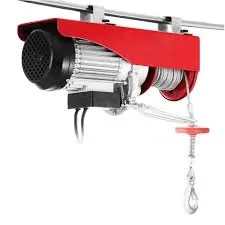


Industrial Fall Protection Devices Ensuring Safety in the Workplace
In industries where height and elevation are part of daily operations, fall protection is a critical concern. Falls are one of the leading causes of injuries and fatalities in workplaces worldwide. To mitigate these risks, various fall protection devices have been developed to ensure the safety of workers. This article explores the importance of fall protection devices, their types, and best practices for their use.
The Importance of Fall Protection
According to the Occupational Safety and Health Administration (OSHA), falls can result in serious injuries and even fatal accidents. As such, implementing effective fall protection strategies is not only a matter of compliance with safety regulations but also essential for maintaining a healthy work environment. Companies that prioritize fall safety not only protect their workers but also reduce costs associated with accidents, such as medical expenses, litigation, and downtime.
Types of Fall Protection Devices
There are several types of fall protection devices available, each designed for specific situations and environments. These devices can be categorized into three main types personal fall arrest systems (PFAS), guardrails, and safety nets.
1. Personal Fall Arrest Systems (PFAS) These systems are designed to stop a person's fall after it has occurred. A PFAS typically consists of a full-body harness, lanyard, and anchorage point. A properly fitted harness is crucial, as it distributes the force of a fall over the wearer’s body. When using PFAS, it is essential to ensure that the lanyard is connected to a stable anchorage point to prevent any swings or secondary falls.
2. Guardrails Guardrail systems are fixed barriers installed around elevated work areas, such as roofs, scaffolding, and mezzanines. These safeguard workers by preventing them from accidentally falling off edges. A well-constructed guardrail system includes top rails, mid-rails, and toe boards. They must meet specific height and strength requirements set by OSHA to be effective.
3. Safety Nets Safety nets are typically used in construction and maintenance work where fall risks are significant. These devices are installed below the work area and can catch workers if they fall. Safety nets must be properly installed and maintained to ensure they can effectively reduce the likelihood of serious injuries.

Best Practices for Using Fall Protection Devices
While having fall protection devices in place is essential, worker training and diligence are equally important
. Here are some best practices for ensuring the effectiveness of fall protection measures- Training and Supervision Workers must receive comprehensive training on the proper use of fall protection devices. This includes not only instructions on how to wear harnesses and connect lanyards but also understanding the limitations of each device. Regular supervision can help reinforce safe practices and ensure compliance with safety protocols.
- Regular Inspections Fall protection devices should be inspected routinely for wear and tear. Harnesses, lanyards, and anchor points must be checked before each use to ensure they are in safe working condition. Any defective equipment should be removed from service immediately.
- Safety Planning Employers should conduct risk assessments to identify potential fall hazards in the workplace and implement appropriate fall protection measures. A written fall protection plan can guide workers on how to operate safely in hazardous conditions.
- Encouraging a Safety Culture Creating an organizational culture that prioritizes safety can encourage workers to take personal responsibility for their safety and that of their colleagues. Leadership commitment to safety can significantly reduce workplace accidents.
Conclusion
Investing in effective industrial fall protection devices and practices is crucial for ensuring worker safety. By understanding the various types of fall protection devices and implementing best practices, companies can create a safer work environment, ultimately reducing workplace accidents and fostering a culture of safety. In the end, the goal is clear to keep our workers safe as they perform their essential tasks at heights.



